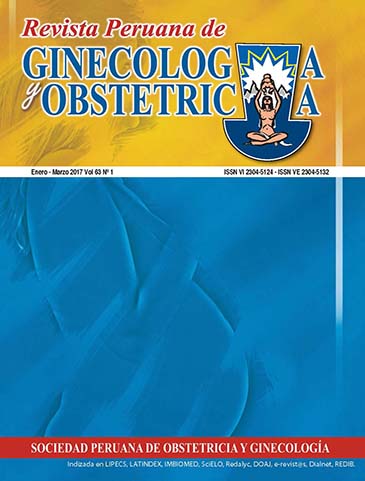Zika virus infection in Peru: from threat to a health problem
DOI:
https://doi.org/10.31403/rpgo.v63i1965Abstract
The Zika virus is a mosquito-borne flavivirus that has emerged as a significant threat in the region of the Americas, especially for pregnant women. Recent outbreaks in Central and South America have been associated with an increase in the incidence of microcephaly and other central nervous system abnormalities in newborns. There is a causal link between Zika infection during pregnancy and microcephaly and other neurological disorders. The region faces a probable epidemic with potential consequences for pregnant women and newborns. The epidemiology of the Zika virus, its threat to pregnancy, clinical consequences and impact on public health are reviewed. A number of features of the mechanisms of infection and dissemination sustain preventive interventions, diagnosis and management of the disease. It is important to intensify its epidemiological surveillance, and to work on prevention and an adequate management response in pregnant women with a presumptive diagnosis or with a Zika virus infection. Its presence has been demonstrated in several regions of Peru. Until December 2016, infection had been confirmed in 61 pregnant women, particularly in Jaen, Cajamarca, with 36 cases. The delivery of 38 newborns has been reported, 32 of which occurred in Jaen. These neonates had no microcephaly or other complications at birth. In the light of the understandable concern among the general population about the zika virus and its risk for the pregnant woman and newborn, strategies for the epidemiological surveillance and control of the zika virus should be ensured. These actions should include adequate pre-conceptional preparation, work on vector control, control of pregnant women and coordination between the health system and the population in order to reduce risks, ensuring adequate protection for women, pregnant women and their fetuses.Downloads
Download data is not yet available.
Downloads
Published
2017-04-21
How to Cite
Aspilcueta-Gho, D., Benites Villafane, C., Calderón Sánchez, M. M., & Calderón Yberico, J. G. (2017). Zika virus infection in Peru: from threat to a health problem. The Peruvian Journal of Gynecology and Obstetrics, 63(1), 57–64. https://doi.org/10.31403/rpgo.v63i1965
Issue
Section
Simposio
















